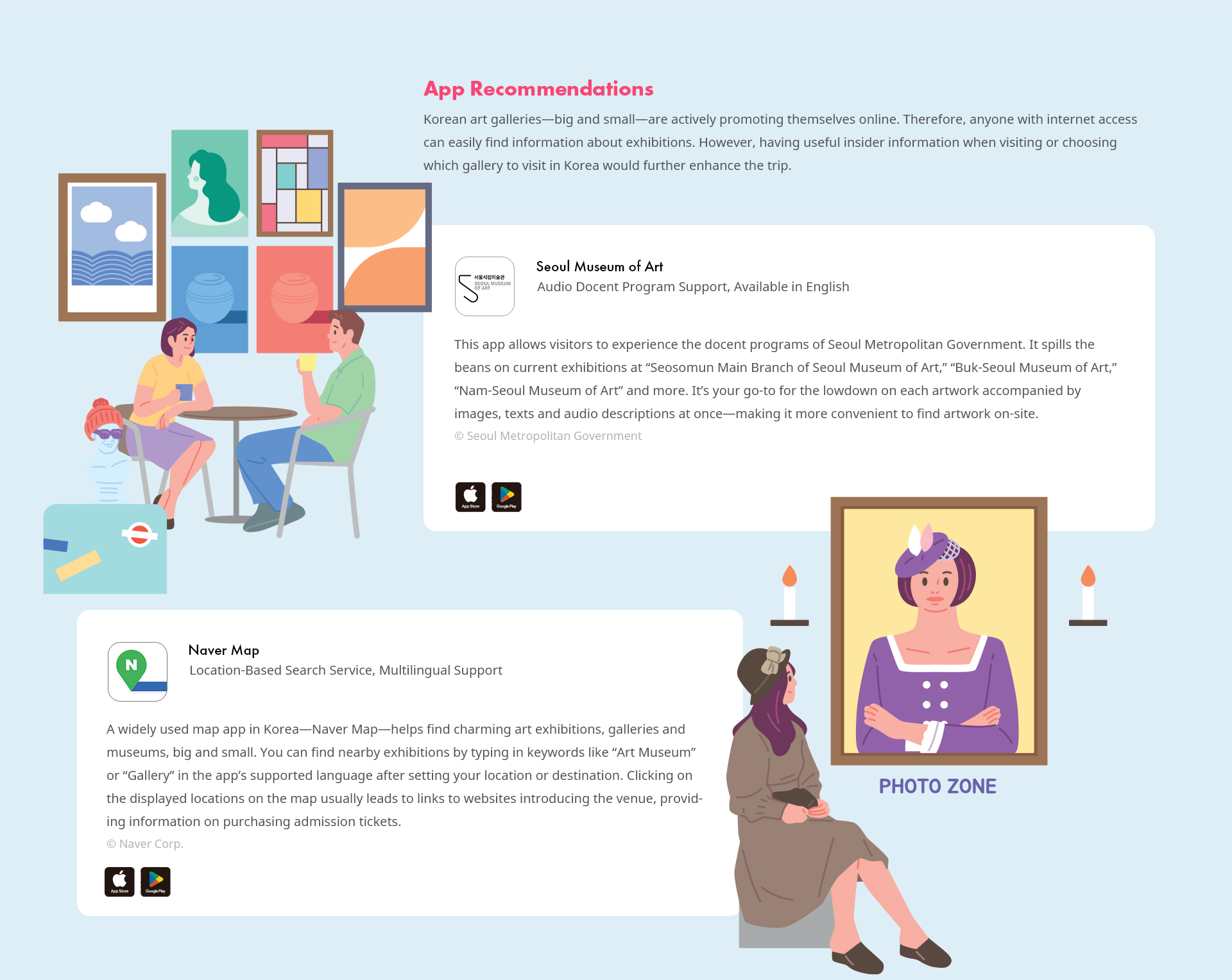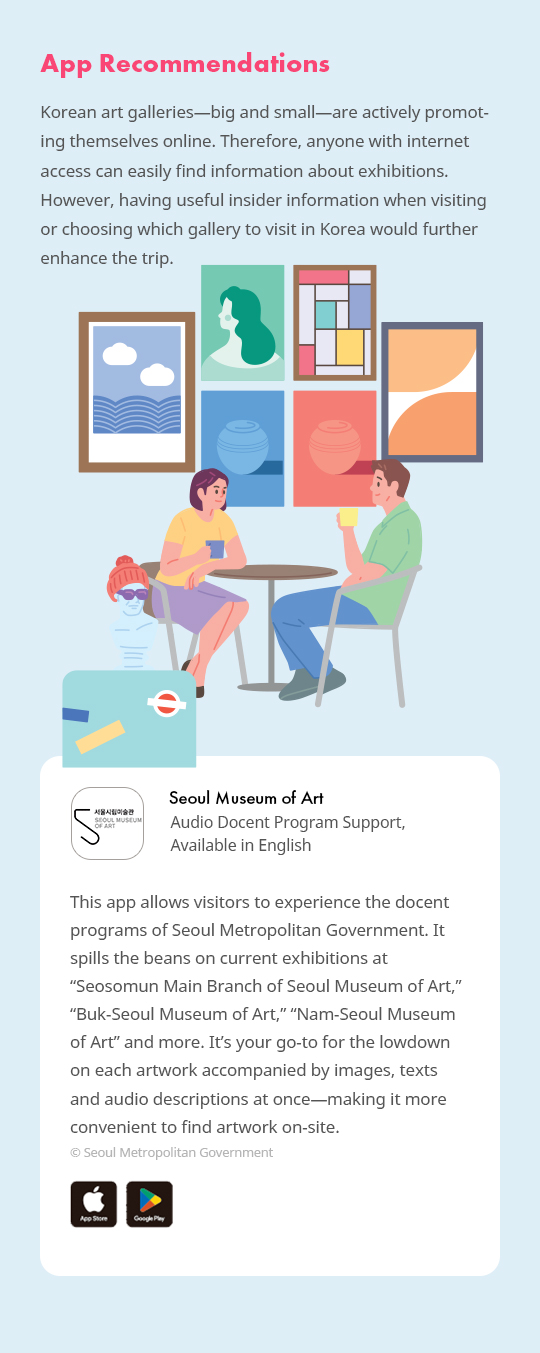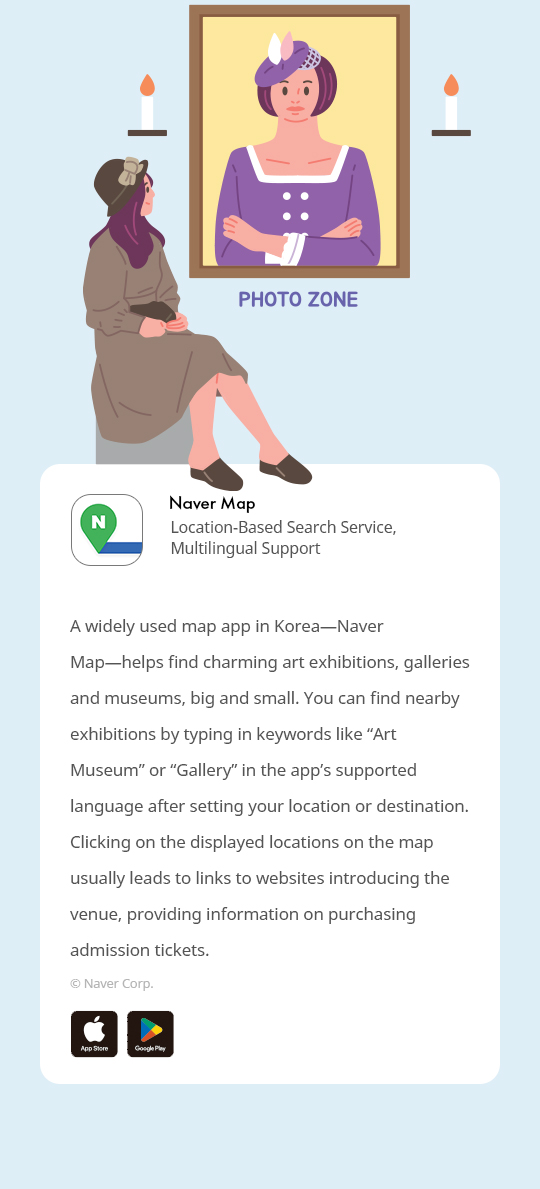Art galleries are all the rage among Korea’s young crowd. Art is no longer seen as intimidating―instead, it’s something they want to dive into headfirst. These hubs of creativity aren't stilted places, but they’re where everyone wants to be. The merging of the art world’s quest to break free from exclusivity and Gen Z’s hunger for fresh experiences has birthed a trend of “art gallery hopping” across Korea.
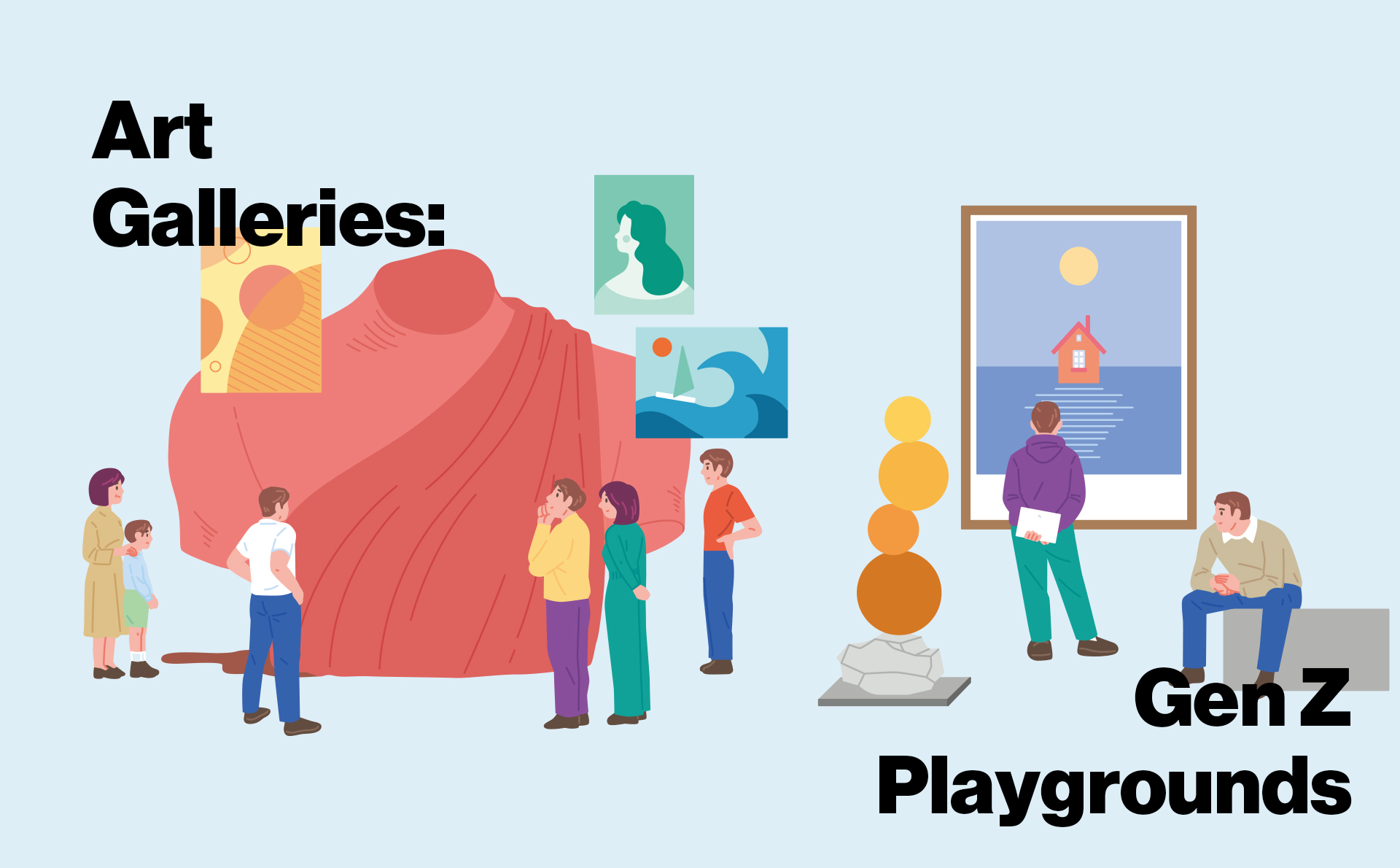
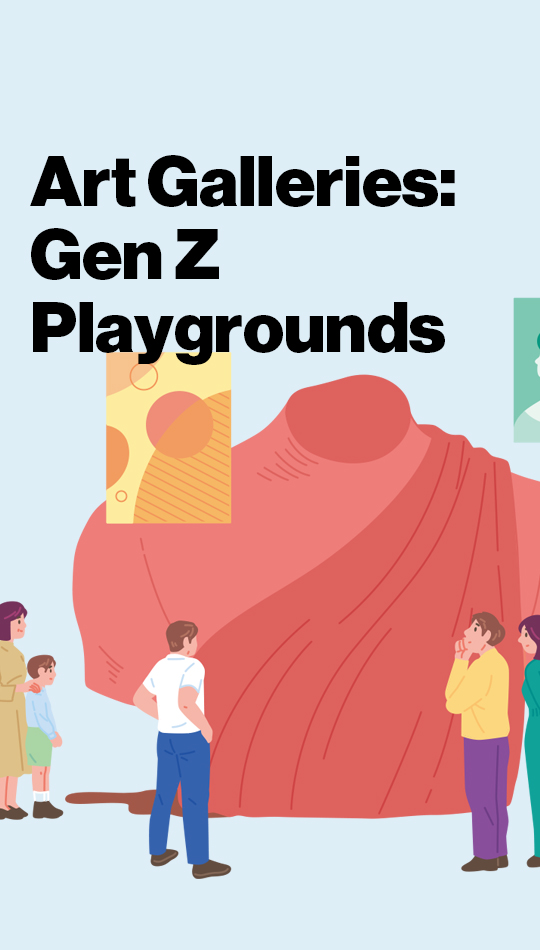
Writer.
Sung Ji Yeon
Illustrator.
RYUGOON
Art Galleries Turned Local Hotspots
Exhibitions, specifically art galleries, are the hottest spots for Korea’s trendsetting Gen Z. They’re not just places to admire art―they’re perfect to visit for going on dates or regular hangouts with friends. Following the trend set by Korean youths, foreign tourists are jumping on the bandwagon as part of their tourist itinerary. Some of Seoul’s hippest neighborhoods, like Seongsu-dong Village and Yongsan-dong Village, boast privately owned art galleries that top the must-visit lists for globetrotters.
Art galleries have always existed, so why is there a sudden interest in art galleries among the Gen Z crowd? The primary reason is the culture of enjoying sharing photos on social media. These exhibitions are chock-full of eye-catching artworks you won’t find anywhere else―making them inherently “Instagrammable.” Youngsters, always looking for something special to share, flock to galleries to capture these moments.
They also visit galleries to get a bang for their buck. While some special exhibitions may cost upwards of KRW 12,000 (USD 8.8)―rivaling the price of a movie ticket―most are priced below KRW 10,000 (USD 7.3). Permanent exhibitions and commercial galleries are generally free of charge. Plus, with post-COVID cost hikes for activities like going to the movies, art galleries offer an affordable way to spend quality time soaking up culture and artwork.
And let’s not forget accessibility and a conducive environment. Art galleries and museums are scattered across Korea―in every region. Of course, some are located deep in the mountains, but most are in urban or tourist-friendly areas. This accessibility, coupled with nearby cultural amenities, attracts people who want to enjoy various cultural activities. Many galleries also have cafes and eateries, making them a one-stop destination for relaxation and cultural immersion.
Art Becomes Approachable
As Gen Z cozies up to art and shows interest in the concept of art and spaces, the art scene is constantly transforming. It's getting more consumer-friendly, catering to their tastes and behaviors. This has led to the introduction of hands-on, interactive exhibitions, encouraging visitors to take photos or videos and actively engage with the artworks. They also organize exhibitions with unconventional formats―such as inviting visitors to become part of the artwork themselves or actively utilizing screens and other devices that allow them to explore and manipulate the exhibits.
This shift in behavior is being positively received because it smashes the idea that art is “highbrow and inaccessible.” Viewing an exhibition is a proactive endeavor that requires the person who wants to learn or appreciate culture to take action. Therefore, unless an individual has a strong interest in art, it was difficult to get them to visit the museum. Thanks to the culture of sharing among Korean youths and the consumption culture surrounding exhibitions, “art” is getting a major PR boost. As a result, awareness and appreciation of art are steadily increasing.
In Korea, art has become more approachable, and art galleries have become must-visit destinations. Whether you’ve always felt art was a bit too lofty or you’re just craving something different, Korean art galleries are calling your name. Who knows? As you enjoy the exhibitions, you may just find that art becomes your new friend along the way.
